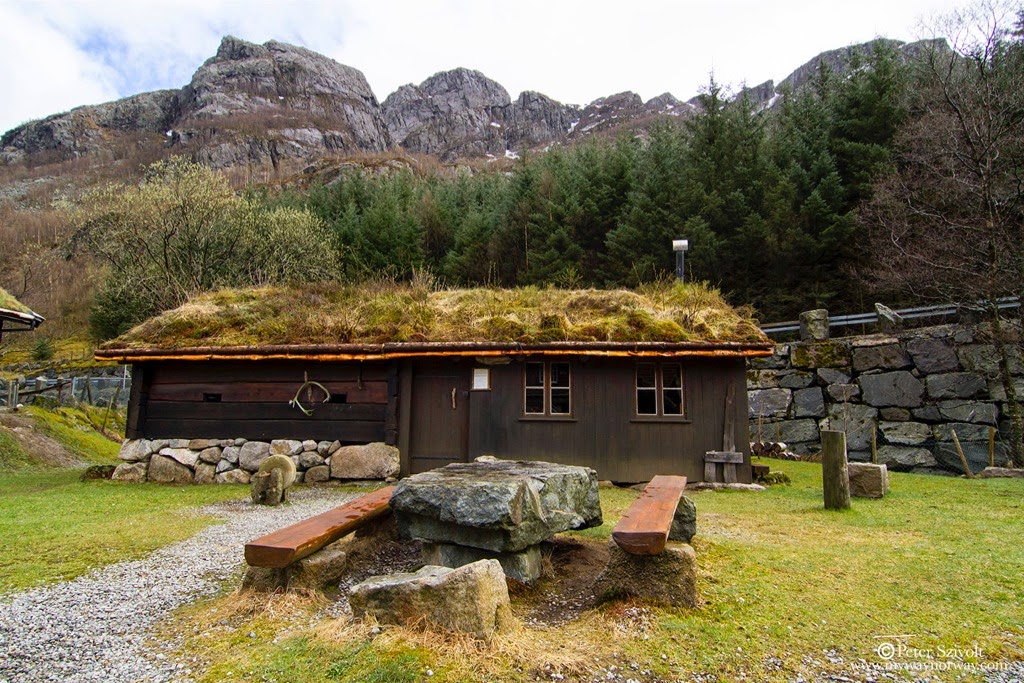 A sea day is a fine thing to have, but still everybody was anxious to finally spot land in the late evening.
A sea day is a fine thing to have, but still everybody was anxious to finally spot land in the late evening.
The Norwegian fjord coast is unequivocally one of the most exciting, dramatic landscapes in the world. And on this trip we will visit some of its highlights, go where the coastal ships of the company won’t go.
In order to make the most out of it we start very early: At first light of the day we venture into Lysefjord, the first fjord of Fjordnorway, the particular western section of the country that is home to a whole series of these natural wonders.
 Lysefjord is rather short with “only” 42 kilometers length and a maximum depth of nearly 600 meters. But it is a cut in the landscape as sharp as it can be; the granite walls are looming near-vertically above us as we are moving deeper inside, passing Henjangefossen, Preikestolen and other famous locations.
Lysefjord is rather short with “only” 42 kilometers length and a maximum depth of nearly 600 meters. But it is a cut in the landscape as sharp as it can be; the granite walls are looming near-vertically above us as we are moving deeper inside, passing Henjangefossen, Preikestolen and other famous locations.
Whereas in the past farmers were living constantly in this violent solitude, mostly self-sustained off their cattle and sheep, the rare houses are now mostly for recreational purposes. Solitude can be a bliss, if it is not permanently imposed on you…
 Near the bottom of the fjord is a crazy place, unfortunately hidden in the mist today: Kjeragbolten, situated at a lofty 1000m above the fjord level, is a large boulder, wedged in a crack in-between two rock walls, accessible only to the most daring, as you are literally standing one kilometer above ground. Well, some people take the leap - with a parachute; it is one of the most famous base jump spots in the northern hemisphere.
Near the bottom of the fjord is a crazy place, unfortunately hidden in the mist today: Kjeragbolten, situated at a lofty 1000m above the fjord level, is a large boulder, wedged in a crack in-between two rock walls, accessible only to the most daring, as you are literally standing one kilometer above ground. Well, some people take the leap - with a parachute; it is one of the most famous base jump spots in the northern hemisphere. The skies are a little hesitant to clear up, but after a while the drizzle seizes. Even a bit of blue is visible here and there. So the excursions going from beautiful Stavanger are a success, be it the panoramic tour, the visit of the herring and tin can factory (which had a huge impact at the time, believe it or not: the industrialized production of durable conserves caused also a boost in ship building, as more herring could be processed.), or the walking tour through the picturesque wooden Old Town. Interesting stories are to be learned, for example about a village of 50 people in the 12th century that gets an enormous cathedral, which served as a bribe for an English bishop, so that he would divorce said king.
The skies are a little hesitant to clear up, but after a while the drizzle seizes. Even a bit of blue is visible here and there. So the excursions going from beautiful Stavanger are a success, be it the panoramic tour, the visit of the herring and tin can factory (which had a huge impact at the time, believe it or not: the industrialized production of durable conserves caused also a boost in ship building, as more herring could be processed.), or the walking tour through the picturesque wooden Old Town. Interesting stories are to be learned, for example about a village of 50 people in the 12th century that gets an enormous cathedral, which served as a bribe for an English bishop, so that he would divorce said king.
There also is a small glass bottle, kept in the Oil Museum, which contains the whole fortune of Norway: It is the very first amount of crude oil, harvested at the Ekofisk field in 1969. Virtually this bottle turned the land of fishermen and peasants into one of the richest country in the world.
After a wonderful and educational day in Stavanger we cast the lines and head further towards wonderland.


